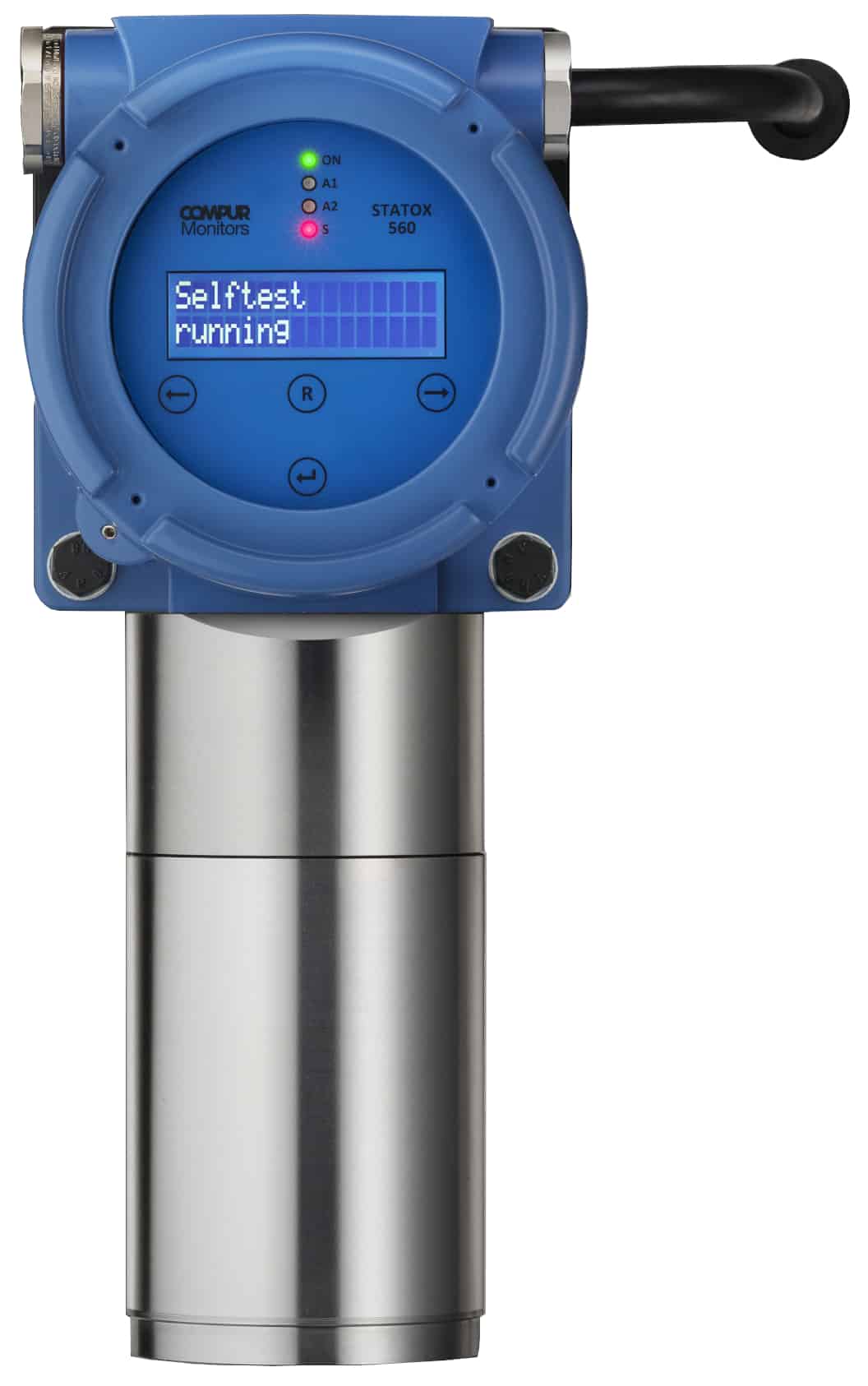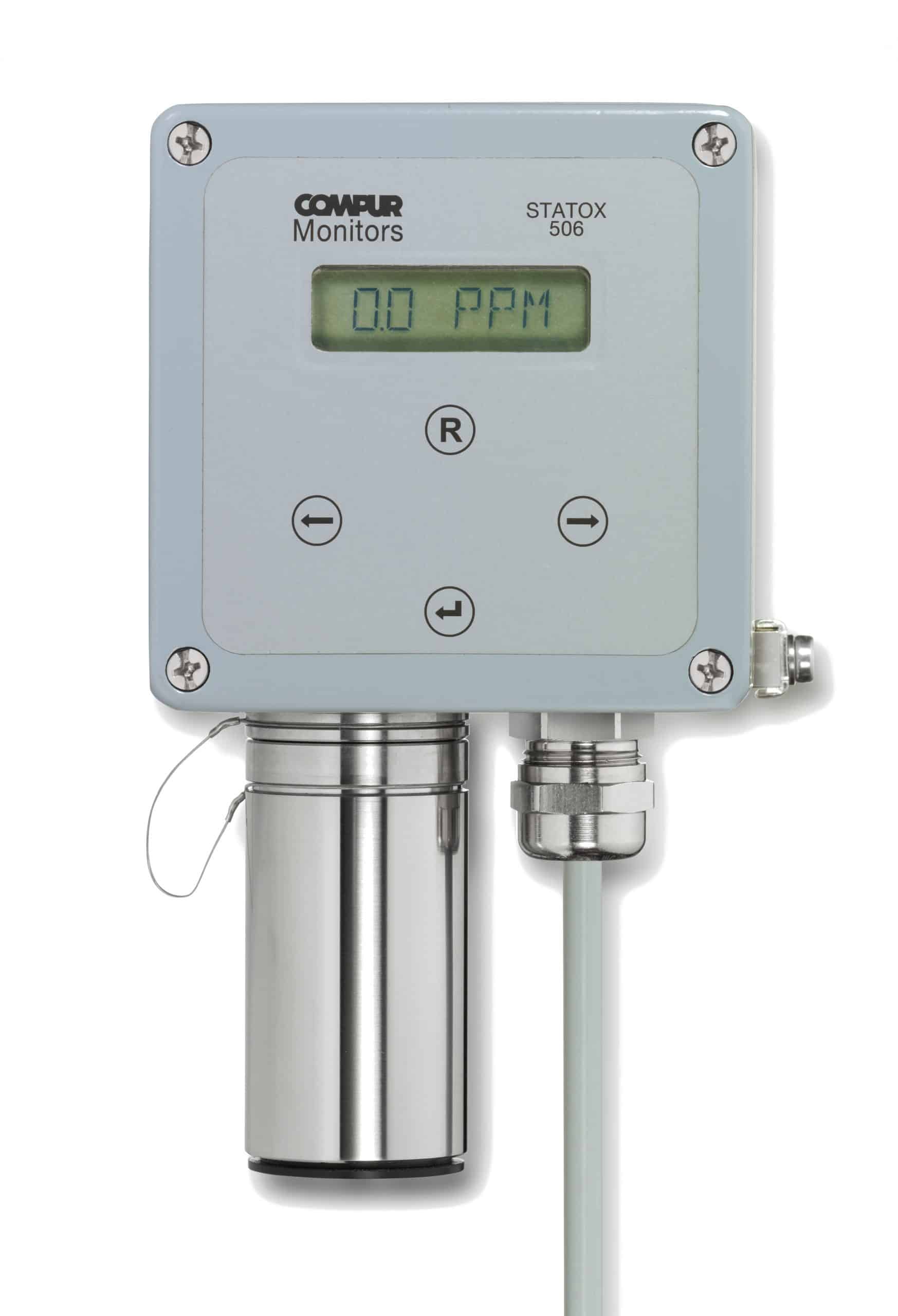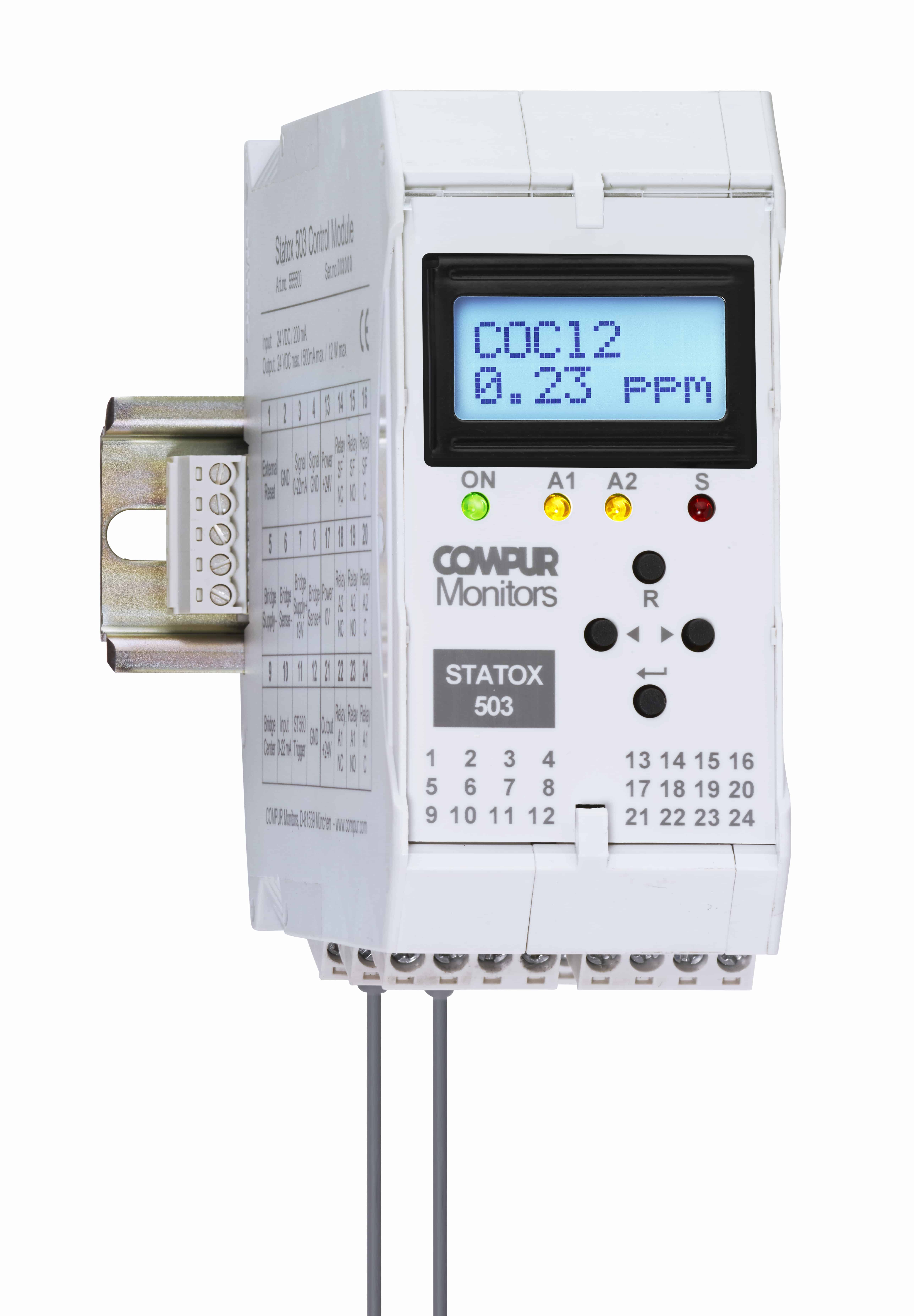Protecting from the invisible danger: gas detectors from Compur Monitors
We focus on your safety
Nothing matters more to us than your safety. As a medium – sized company we are particularly close to our customers. Our mission is to provide gas detection for your safety.
In this context our entire team stands for first class advice, first class products and first class service.
We have been manufacturing high – end gas detectors and gas warning systems ever since the 1970s and therefore look back to a bunch of experience in whatever has to do with measuring the concentration of toxic or combustible gases.
Examples for stationary systems:

Statox 560
Measuring principle: electrochemical
The further development of the best-seller Statox 4120.
The only gas warning system for the detection of toxic gases that can carry out a self-test with real gas.
Maximize safety while minimizing maintenance costs!
Statox 506
Measuring principle: electrochemical
SIL2 standard for the detection of toxic gases and oxygen.
Statox 501 LC IR and MC IR
Measuring principle: infrared-absorption
The stationary low-cost solution for the detection of combustible gases and CO2.
Statox 503
The control module for stationary gas warning devices.
SIL2 Standard: Stand-Alone or in combination with our 4-20 mA transmitters and catalytic sensors.
Gas detectors must be installed wherever legislation or local safety standards require to monitor potentially dangerous atmosphere. As soon as the alarm threshold limit value – TLV is exceeded, they generate a visible and audible alarm. Being alert at the presence of toxic or combustible gases increases as well plant safety, personal safety and industrial hygiene. Professional gas detection improves industial health and safety and contributes to protect the environment and thus reduces cost. Any identification of a leakage is a significant cost reduction in terms of protecting buildings, plants and other assets. It will also save cost for cooling or heating, and avoids absence of personnel due to illness.
In any respect the operator of a plant is responsible for its safe and reliable function. Industrial standard gas detection without any compromise is an important tool to achieve maximum safety and minimum down time.
Frequently asked questions
The right gas detector for your gas and your application
Compur Monitors is manufacturer of high – end gas detectors, as well fixed and portable. Most instruments comply with functional safety requirements level SIL 2. Highly sensitive and specific sensor technology makes sure that no deviation in ambient air quality can endanger the health of personnel or the environment. Highly specific sensors reduce the risk of false alarms to nearly zero. Elaborate selection and positioning of gas detectors protect the ambience in the chemical, energy, pharmaceutical, food and oil industry, but also in greenhouses, wastewater treatment, drinking water supply, airports, hospitals, malls and machinery compartments. We, the manufacturer of gas detection systems, provide best accuracy of measurement in the LEL as well as in the ppm or even ppb range. No matter if you need to detect toxic gases, combustible gases, VOC or even multiple gases simultaneously, we provide the appropriate sensor technology: catalytic, (Cat) infrared (IR), photoionization (PID) or electrochemical (EC).
Important: Sensor positioning
Stationary gas detectors monitor hazardous areas around the clock. As point monitors can only detect gas in their vicinity, it is important to position them in a strategic manner: Close to potential leakages such as valves flanges, pumps and vessels, but also spread well in the plant. Sensors for gases with higher specific density than air should be placed close to the floor (protect from rain splash – back!), sensors for gases with lower density should be located close to the ceiling. Our instruments feature high intrusion protection ratings, so that they can be used as well indoors as outdoors. Perfect personal protection provide our multi gas detectors. Its optional sampling system can aspirate gas from a distance of more than 20 m.
The lifehood of gas detection is functional safety
Gas detector must be proof – tested or calibrated in regular time intervals by trained and authorized personnel. We provide useful tools for bump – testing, such as the Compur gas generator, but also appropriate calibration equipment and accessories. The latest member of the gas detector family is the Statox 560. With its built – in gas generator it can perform an automatic self – test every 24 hours. In case of a problem, our instruments will generate an alarm with absolute reliability.



